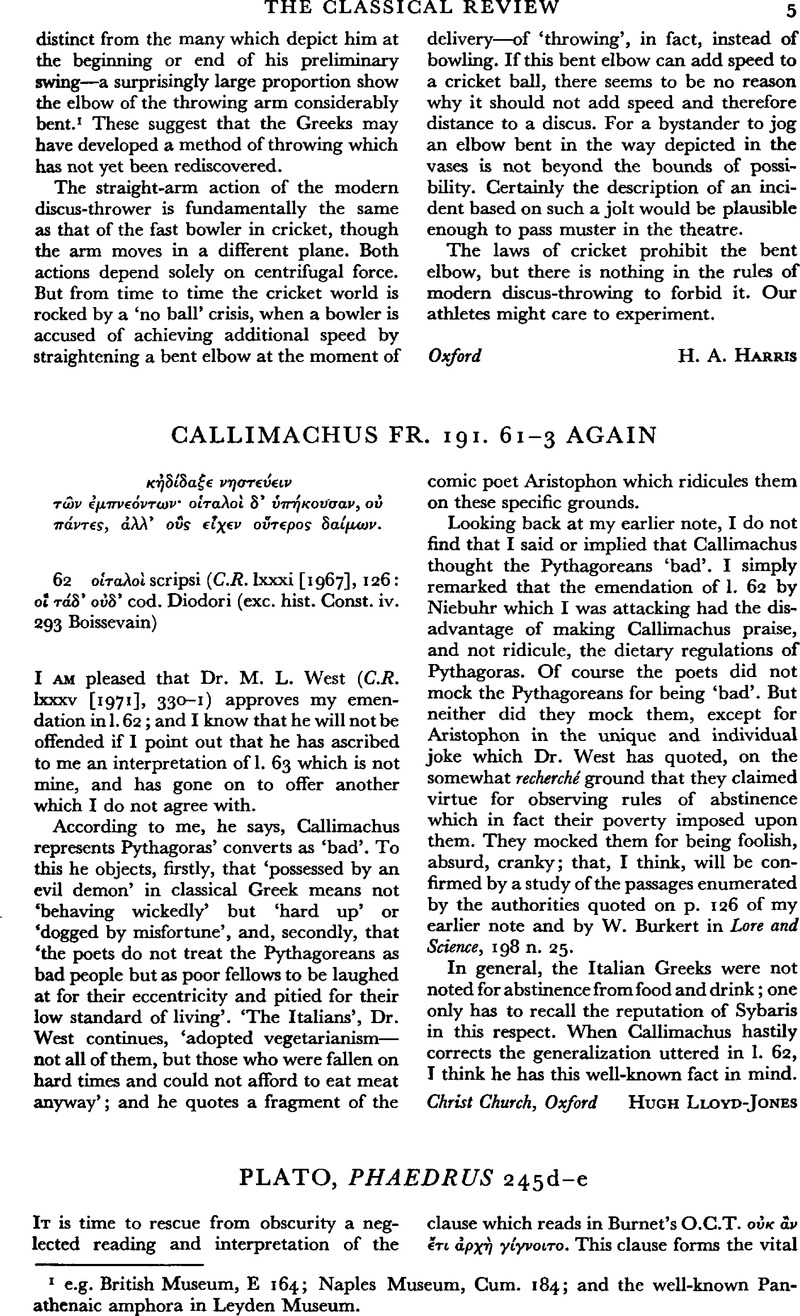Article contents
Plato, Phaedrus 245d–e
Published online by Cambridge University Press: 27 February 2009
Abstract

- Type
- Review Article
- Information
- Copyright
- Copyright © The Classical Association 1974
References
1 This is reflected in the opening words, ἐπειδὴ δὲ ἀγένητόν ἐστιν, καὶ ἀδιάφθορον αὐτὸ ἀνάγκη εἶναι. Many interpreters ignore this and treat the ἀγένητον argument something of a parenthesis.
2 I here treat the d 3 clause as parallel to d 6 statement of the axiom, in order to bring out their similarity of function in conne cluding the proof. Strictly, the parallel to 6 as statement of the axiom is d 1 (see above); but that receives its complement in αὐτὴν δέ μηδ'ἐξ ἑνός The argument is then reformulated hypothetically, εξἀρχῆς… (d 2), where the direct antithesis is between ἔκ του (d 2) and the ἐέ ἀρχῆς for which I argue in d 3.
- 1
- Cited by


